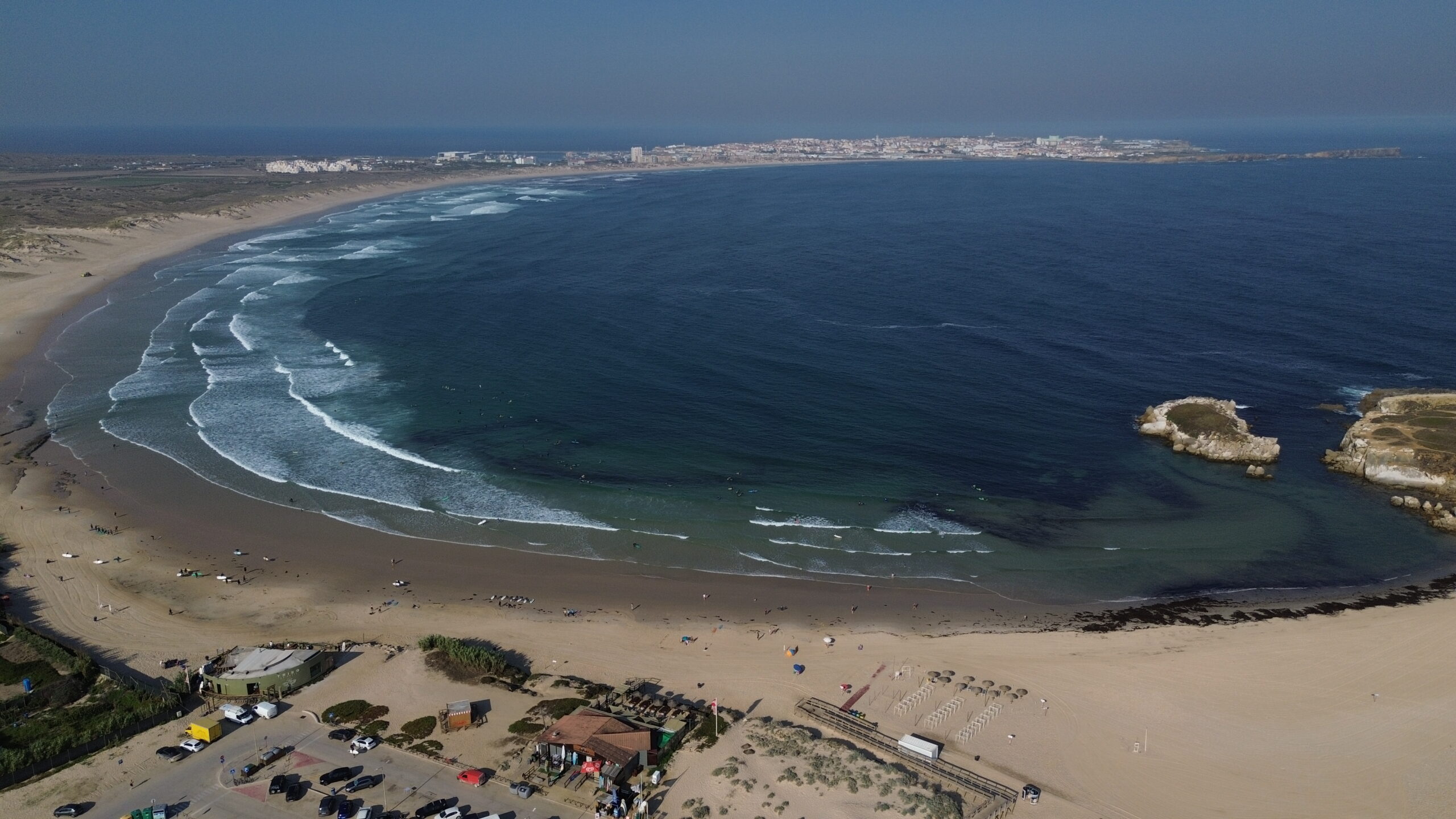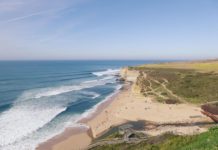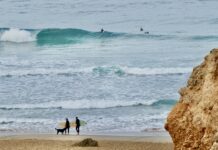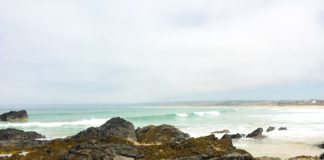Where to surf this winter in Europe? A practical preview for intermediate surfers
TL;DR: Winter equals progress. Consistent swell, fewer crowds, more space to practice your turns. Don’t chase the biggest wave, pick the best shoulder instead. Top regions for mellow intermediate surfing: Peniche (Portugal), Zarautz & San Vicente (Spain), and on good days, a sandbank in southern France.
Why winter is your best window for surfing
Between November and March, the North Atlantic Ocean operates at full throttle. Storm systems generate deep groundswell that regularly reaches Portugal, France, and Spain. Surfing in winter means catching more sets and making faster progress.
What should intermediates watch out for?
1. Wind (offshore > cross-shore > onshore)
Offshore winds create a clean face and give you control on the drop. Cross-shore requires more effort. Full onshore winds feel like a tough workout and are far less enjoyable.
2. Tide
Beachbreaks usually have a sweet spot. Always check the tide chart beforehand and stay flexible in your choice of surf spot.
3. Ideal swell range for mellow to intermediate progress
For European beachbreaks, 0.8–1.5 metres is the perfect swell range for intermediates.
spot matrix: the best mellow/intermediate options
| Spot / region | Level | Winter swell range (intermediate) | Best wind direction | Best tide | Why it’s good for progress |
|---|---|---|---|---|---|
| Cantinho da Baía (Peniche, PT) | Intermediate — mellow | 0.8–1.5 m N / NW | E / NE offshore | Mid tide rising | Long rides, predictable shoulders, great for progression |
| Molhe Leste (Peniche, PT) | Intermediate | 0.8–1.4 m | E / NE | Mid tide | Clean face, fewer crowds |
| Zarautz (Basque Country, ES) | Beginner–Intermediate | 0.6–1.3 m | NE / E | Mid tide | Friendly beachbreak, perfect for practising turns |
| San Vicente (Cantabria, ES) | Intermediate — mellow | 0.6–1.2 m | W / NE | Mid tide | Gentle entry, long wave lines |
| Hossegor / Seignosse (FR) – only on smaller days | Advanced / Intermediate (only with the right sandbank) | 0.6–1.0 m | W / NE | Mid tide | World-class waves, but do not surf the big days |
Portugal — winter magic (Ericeira / Peniche / Algarve)
Ericeira: Multiple reef breaks with predictable lines. Easterly winds provide a delightful offshore.
Peniche (the best choice for intermediates): Molhe Leste and Cantinho da Baía offer long rides, clean faces, and ideal shoulders.
Algarve: West winds can bring onshore conditions, so drive 15 minutes to the south coast for cleaner lines.
Wetsuit advice: 4/3 mm with boots (Dec–Feb). Northern Portugal sometimes requires 5/4 mm.
France; sandbanks that change weekly (Hossegor / Capbreton)
Southern France can be raw. Big swells, fast drops, strong rips. But on smaller days (0.6–1.0 m), the sandbanks can be truly mellow.
Checklist on arrival:
- Check from the dunes: is the wave closing out? If yes, drive 300 metres down the coast.
- Pick sandbanks with clear shoulders, avoid those with beach-wide closeouts.
Wetsuit advice: 5/4 mm with boots, hood optional.
Spain (Basque country & Cantabria) — mellow & long lines
- Zarautz: super accessible, perfect line for practising turns.
- San Vicente: gentle entry, mellow sets, family- and intermediate-friendly.
- Mundaka: just watch for inspiration—it’s highly educational.
Wetsuit advice: 4/3 mm with boots.
Canary Islands (Fuerteventura): winter sun + mellow progression
Fuerteventura is a surfer’s playground: you can always drive to find offshore conditions. The north coast spots vary from mellow point-like reefs to friendlier beachbreaks around El Cotillo and Waikiki.
Why it’s perfect for intermediates:
- Many options within 20–30 minutes’ drive
- Not dependent on mid-tide beachbanks like France
- Clean wave faces courtesy of the trade winds
Top mellow/intermediate spots:
- El Cotillo (beachbreak) — mellow days, gentle entry
- Waikiki (Corralejo) — friendly vibe, long wall
- Punta Blanca (reef, right-hander) — predictable, great for turns
Swell range (winter, intermediate): 0.8–1.4 m
Wetsuit advice: 3/2 or 4/3 mm (Dec–Feb)
Morocco — mellow points & endless glides
Atlantic swells roll in long lines right onto the coast here. Winter is high season. The vibe is relaxed and the point breaks are ideal for developing flow and rail-to-rail turns, without the chaos of beachbreaks.
Why it’s perfect for intermediates:
- Long rides → more time on each wave → faster progress
- Many spots with gentle entry and predictable rhythm
- Active surf & coaching scene, including video analysis
Best mellow/intermediate spots:
- Imsouane (The Bay) — mellow, endless lines, perfect for technique
- Taghazout (Panoramas / Banana Point) — gentle points, safe exits
- Tamri (beachbreak) — an alternative when swell picks up
Swell range (winter, intermediate): 0.7–1.5 m
Wetsuit advice: 3/2 or 4/3 mm (Dec–Feb), depending on wind
FAQ
1. What wetsuit do I need in winter?
4/3 mm for Portugal/Spain, 5/4 mm for France.
2. Best swell range for intermediates?
0.8–1.5 metres for progression.
3. Best time of day?
Morning sessions tend to have less wind and emptier line-ups.
4. Where can I book coaching?
Choose a school that offers video analysis.
5. Week trip or month?
A week builds momentum; a month triggers a big leap in progress.











